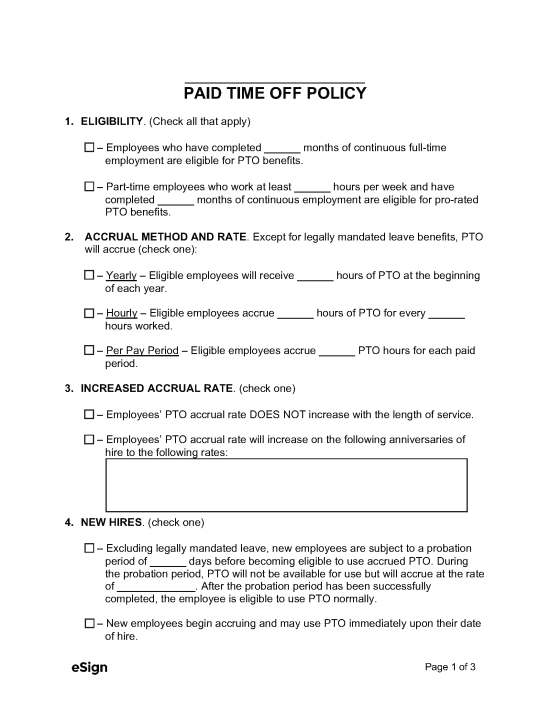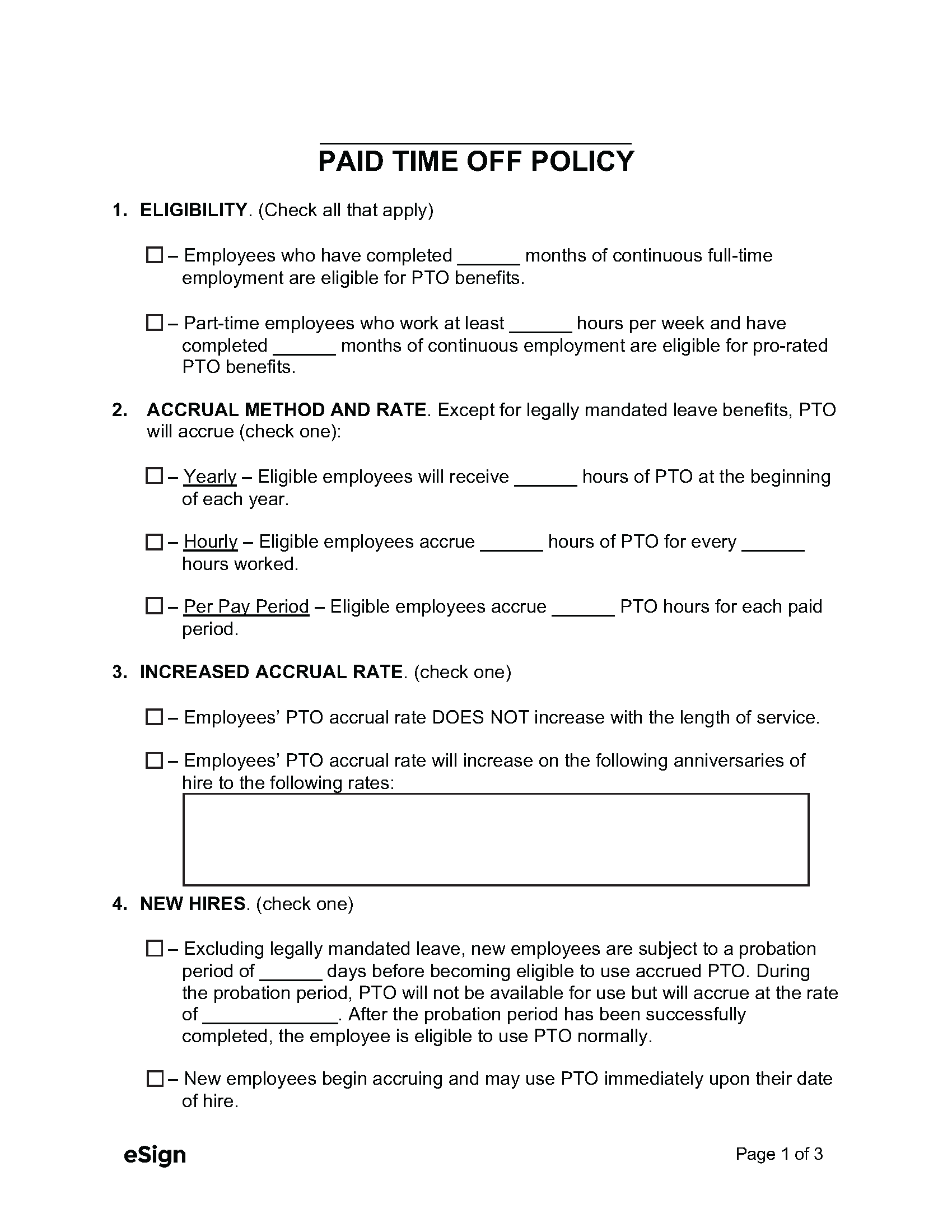Types of PTO Policies
Traditional
A traditional paid time off policy grants employees a set number of hours, which are generally split into three categories: vacation leave, sick leave, and personal days. The amount of leave granted typically depends on the amount of time the employee has worked for the company.
Accrual
With an accrual PTO policy, employees gradually earn time off based on the number of hours, days, or months they work.
Some companies may opt to provide employees with a set number of sick days per year in addition to their accrued PTO.
Banked
When a company opts for a banked paid time off policy, the staff receive a set number of paid days off per year to use as they see fit. Generally, they are not split into categories, and employees have the flexibility to take leave for any reason.
Unlimited
Unlimited PTO policies allow employees to take an uncapped number of days off for any reason, provided their work is not impacted. In many cases employees are still required seek manager approval with this system.
Use-It-Or-Lose-It Policies
Some employers may implement a use-it-or-lose-it policy, which requires employees to take their PTO by a specific deadline, or it will be forfeited. While these policies aren’t covered under federal law, some states have prohibited or regulated their use.
States That Prohibit Use-It-Or-Lose-It PTO Policies |
||
| State | Details | Laws |
| Arizona |
|
§ 23-372(D)(4) |
| California |
|
§ 246(d), DLSE Enforcement Manual § 15.1.4 |
| Colorado |
|
§ 8-13.3-403(3)(b), § 2.17.2 |
| Connecticut |
|
§ 31-57s(a) |
| Illinois |
|
§ 300.520(h) |
| Maryland |
|
§3–1304(g) |
| Massachusetts |
|
§ 148C(d)(7) |
| Michigan |
|
§ 408.963(5) |
| Minnesota |
|
§ 181.9446(b)(1) |
| Montana |
|
Montana Dept. of Labor & Industry Wage and Hour FAQ |
| New Jersey |
|
§ 34:11D-2(a) |
| New Mexico |
|
§ 50-17-3 |
| New York |
|
§ 196-b(6) |
| Oregon |
|
§ 653.606(3) |
| Rhode Island |
|
§ 28-57-5(e) |
| Washington |
|
§ 296-128-620(4) |
Sample
1. ELIGIBILITY. (check all that apply)
☐ – Employees who have completed [TIME PERIOD] of continuous full-time employment are eligible for PTO benefits.
☐ – Part-time employees who work at least [#] hours per week and have completed [TIME PERIOD] of continuous employment are eligible for pro-rated PTO benefits.
2. ACCRUAL METHOD AND RATE. Except for legally mandated leave benefits, PTO will accrue (check one):
☐ – Yearly – Eligible employees will receive [#] hours of PTO at the beginning of each year.
☐ – Hourly – Eligible employees accrue [#] hours of PTO for every [#] hours worked.
☐ – Per Pay Period – Eligible employees accrue [#] hours of PTO for each pay period.
3. NEW HIRES. (check one)
☐ – Excluding legally mandated leave, new employees are subject to a probation period of [#] days before becoming eligible to use accrued PTO. During the probation period, PTO will not be available for use but will accrue at the rate of [ACCRUAL RATE]. After the probation period has been successfully completed, the employee is eligible to use PTO normally.
☐ – New employees begin accruing and may use PTO immediately upon their date of hire.
4. USING PTO. To use PTO, employees must submit a request to their supervisor or manager [#] weeks in advance of the requested time off, except in cases of emergencyillness, family leave, or any other state or federally mandated allowances for absence from work.
5. SEASONAL RESTRICTIONS AND BLACKOUT DATES. (check all that apply)
☐ – Seasonal Restrictions – Excluding legally mandated leave, at management’s discretion, based on workload and availability of coverage, PTO requests may not be approved if the request includes a day or days that fall on, or within, the dates of: [DATES].
☐ – Blackout Dates – Excluding legally mandated leave, PTO requests will not be approved if the request includes a day or days that fall on, or within, the dates of: [DATES].
☐ – Unrestricted – PTO is not restricted seasonally or by specific dates.
6. CARRY OVER. (check all that apply)
☐ – Employees may carry over up to [#] hours of unused vacation PTO from one calendar year to the next.
☐ – Employees may carry over up to [#] hours of unused sick leave PTO from one calendar year to the next
☐ – Carry over is not permitted. Employees forfeit any unused PTO at the end of the year, excluding legally mandated leave.
7. MAXIMUM PTO ACCRUED. (check one)
☐ – The maximum PTO that an employee may accrue is [#] hours. PTO benefits will cease to accrue for employees who have reached the maximum permitted number of hours.
☐ – The employee is not limited in the amount of PTO they may accrue.
8. PAYOUT. (check one)
☐ – Employees will receive a payout for accrued and unused PTO. The payout will be based on the employee’s pay rate, and the number of hours accrued at the time of separation
☐ – Unused PTO will not be paid out at the end of their employment.
9. OTHER TERMS AND CONDITIONS.
[DESCRIBE ANY OTHER TERMS/CONDITIONS]

